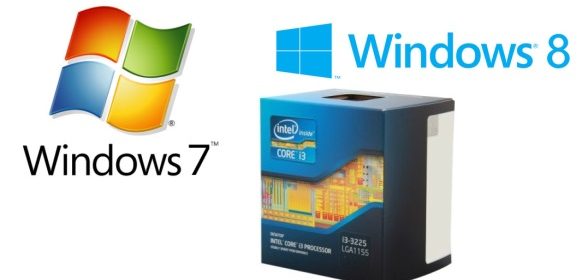AT Compares IVB on Windows 7 & Windows 8

A few weeks ago Ganesh did an excellent writup of an IVB build in a passive Streacom chassis, today he’s back with a look at how Windows 7 and Windows 8 perform on that system. It’s a great read, and I have to admit to being a little surprised by the numbers, but I also wish the piece included factors like Windows Media Center and commerical Blu-ray playback in the mix because frankly those are pretty important to me – and I suspect to many of you as well.
In our initial build, we had avoided filling up the second DRAM slot because the DRAM heat sink ended up scraping against the capacitors in the Nano150 PSU. Unfortunately, this meant that we had halved the memory bandwidth available to the processor. madVR, in particular, is very sensitive to bandwidth constraints. We fixed this by deciding to allow the heat sink to touch the capacitors and ended up increasing the installed memory from 4 GB to 8 GB. In order to install Windows 8, we added another SSD to the system and set the unit up in a dual boot configuration with both Windows 7 and Windows 8. We were able to perform sensible power consumption comparisons between the two operating systems in this scenario (same hardware and software configuration except for the OS itself).
In the rest of the piece, we will be looking at the general performance metrics, network streaming performance (Netflix and YouTube), refresh rate handling, HTPC decoding and rendering benchmarks for various combinations of decoders and renderers and revisit the power consumption and thermal profile of the system.
